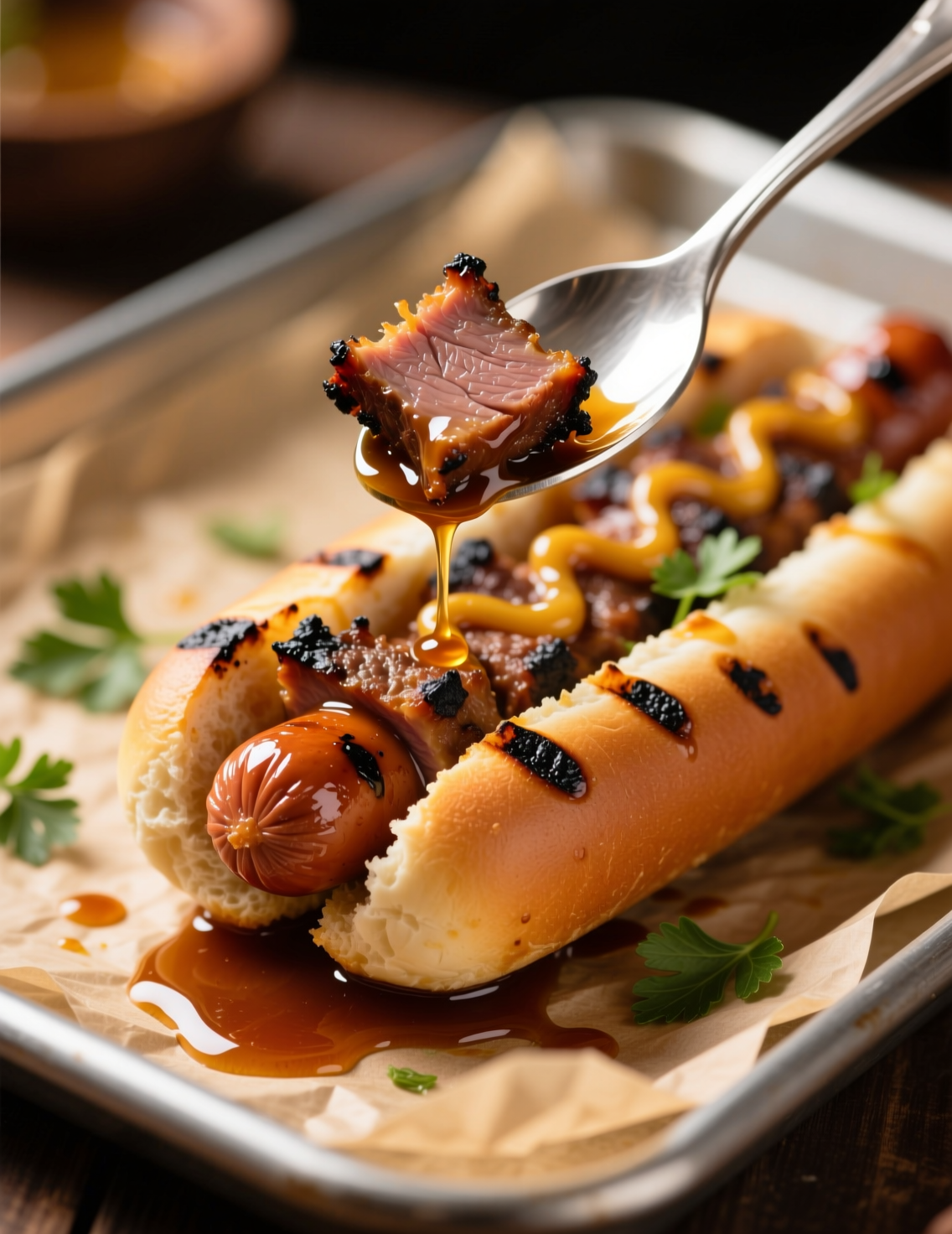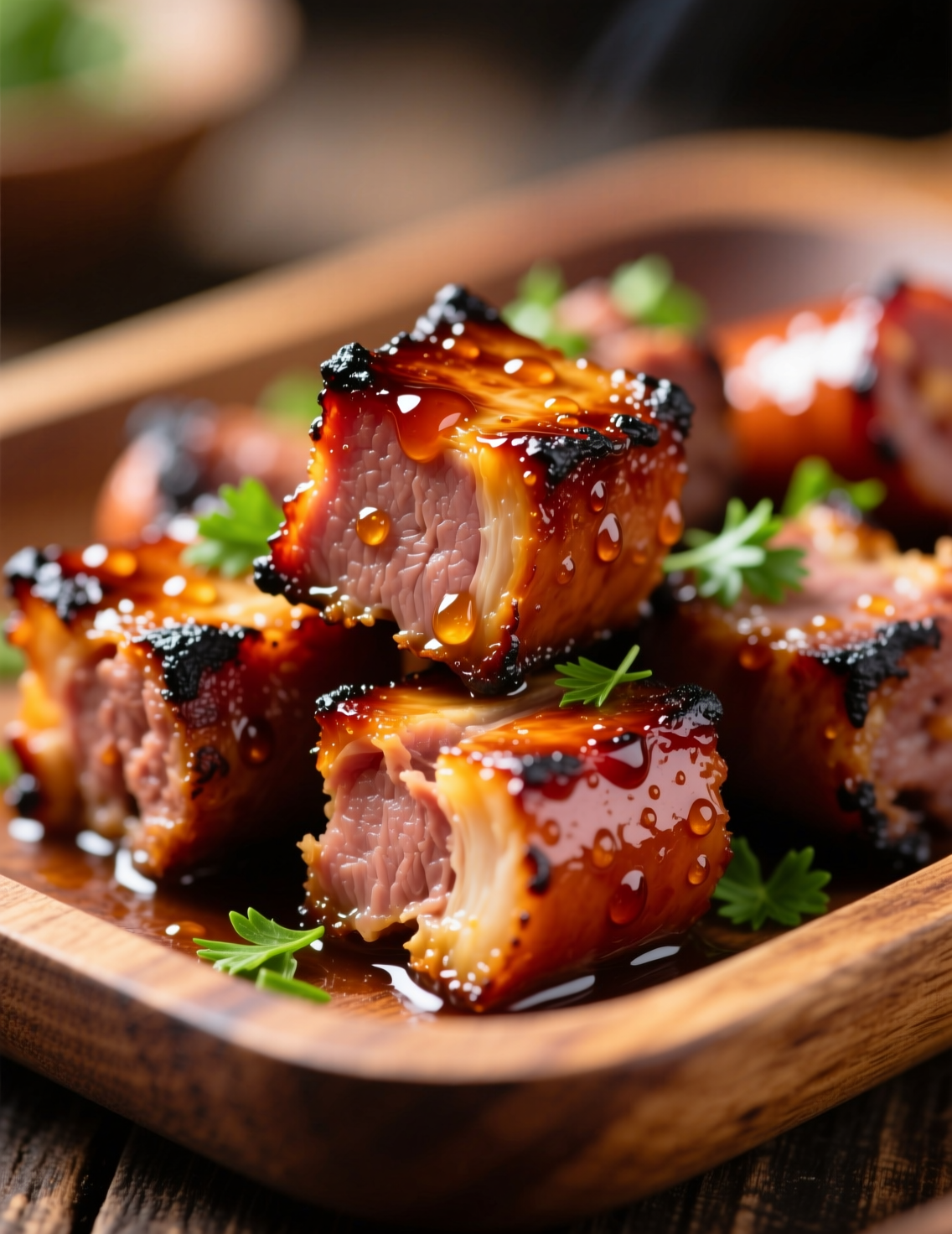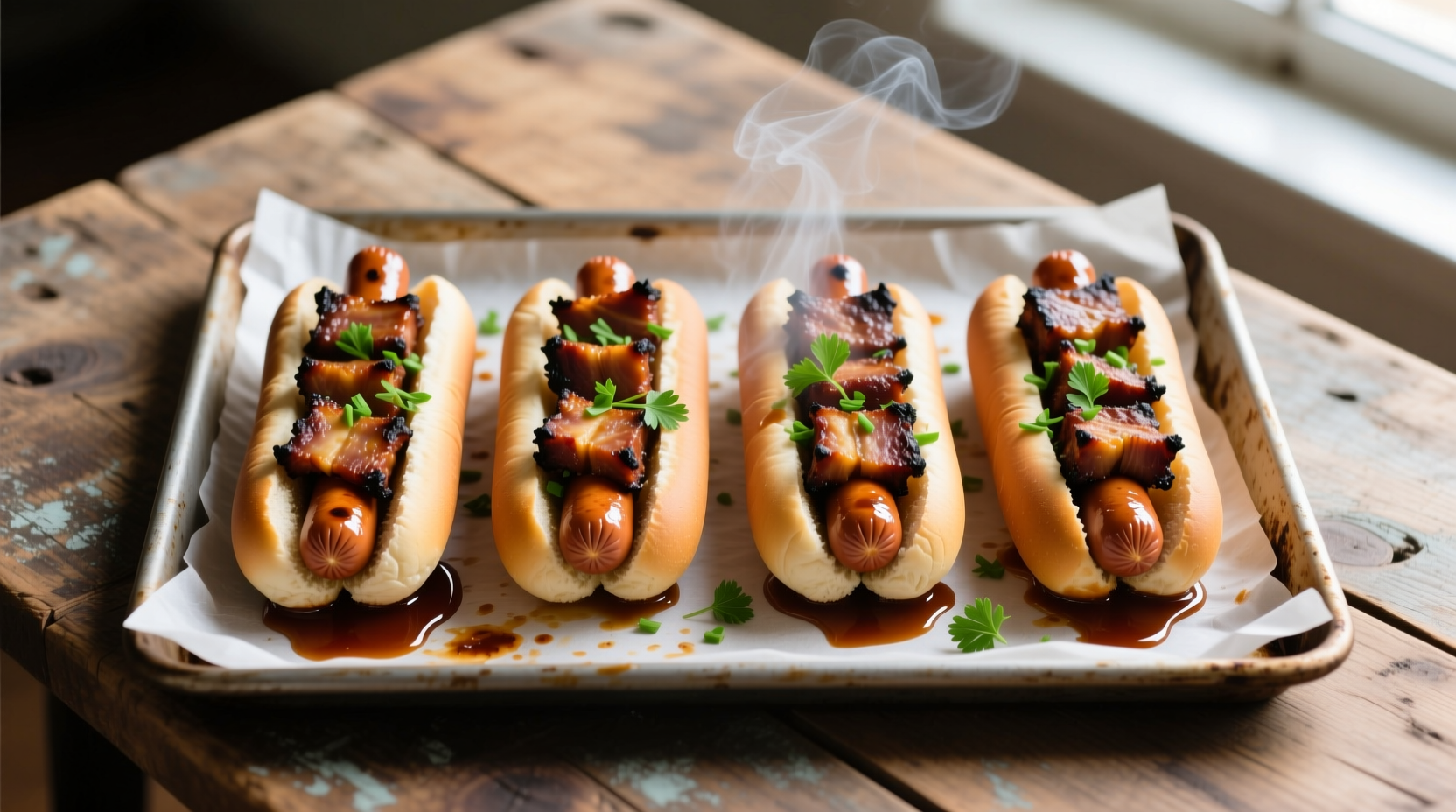There’s something almost mischievous about turning a simple hot dog into something that looks like it belongs on a pitmaster’s table. Baked hot dog burnt ends are exactly that. A dish that borrows from barbecue tradition, yet sneaks in through the back door of convenience. It’s a recipe that’s far too good for the effort it asks, and honestly, that’s the kind of cooking that keeps kitchens alive.
What Are Burnt Ends, Really?
Traditionally, burnt ends come from the point end of a smoked beef brisket. They’re smoky, fatty, caramelized nuggets that pitmasters often treat as prized bites. But brisket takes 12–14 hours, a smoker, and a bit of patience that not every home cook has.
Hot dog burnt ends? They mimic the texture and flavor without the marathon. A fraction of the cost, a fraction of the time, and still a flavor punch that shocks anyone who takes a bite. In professional kitchens, chefs often refer to this as “cheating smart,” and there’s nothing wrong with that when the results shine.
Why Hot Dogs Work So Well
Hot dogs are already pre-cooked, which means all the heavy lifting is done before they even reach your cutting board. They’ve got a balanced fat-to-protein ratio, usually around 25–30% fat depending on brand. This fat is the secret. It renders during baking, mixing with sauce and spices to form that sticky lacquer we crave.
Here’s the kicker. A package of hot dogs costs under $5, and you can produce something that feels like a restaurant appetizer for eight times that value. If you run a food business, that’s margins smiling back at you.
The Recipe – Baked Hot Dog Burnt Ends
This recipe serves 4, though if you’re cooking for teenagers, count that as two, because they’ll inhale it.
Ingredients
- 1 lb high-quality beef hot dogs (about 8)
- 2 tbsp olive oil or melted butter
- 1/3 cup brown sugar
- 1/2 cup barbecue sauce (smoky works best)
- 1 tbsp Worcestershire sauce
- 1 tsp smoked paprika
- 1/2 tsp garlic powder
- 1/4 tsp cayenne pepper (optional, but recommended)
- Salt and black pepper, just a pinch each
Method
- Preheat oven to 375°F (190°C).
- Cut hot dogs into bite-sized chunks, about 1.5 inches each. They should look like mini meat logs.
- Toss pieces in olive oil, paprika, garlic powder, salt, and pepper. Spread them on a foil-lined baking tray.
- Bake for 20 minutes until edges start to blister.
- While that’s happening, mix barbecue sauce, brown sugar, Worcestershire, and cayenne in a bowl.
- Remove hot dogs from oven, pour sauce mix over, and toss until every piece glistens.
- Return tray to oven, bake another 15 minutes. Sauce should bubble, thicken, and cling.
- Let cool 5 minutes before serving, because molten sugar on your tongue is not fun.
That’s it. A process so quick it almost feels like cheating.

Professional Insights on Flavor Balance
Some chefs overcomplicate this dish. You don’t need ten spices. The real trick is balance between sweet, smoky, and spicy. Brown sugar caramelizes at 320°F, creating that candy shell on each piece. Barbecue sauce provides acidity and depth. Cayenne offers a bite, but subtle heat works better than overkill.
If you want to elevate, finish with a squeeze of lime juice. Acid brightens the fat, prevents cloying sweetness, and makes the dish taste less heavy. This is a classic professional move—small tweak, big result.
Pairing Ideas
These aren’t meant to stand alone. In Kansas City, burnt ends usually sit atop baked beans. You can do the same here. Fold them into mac and cheese, toss over nachos, or use as a pizza topping. If you’re plating for guests, a ramekin of burnt ends with skewers for picking up looks modern and stylish.
Even in casual service, the trick is to treat the hot dog burnt ends as more than snack food. Pair them with a light slaw—cabbage, vinegar, and dill. The crunch and tang cut through the richness. This isn’t just garnish, it’s contrast, and that’s what makes food memorable.
Misconceptions Around Burnt Ends
One common misconception: burnt ends should actually be burnt. Wrong. The name’s misleading. They should be caramelized and dark, but not charred to the point of bitterness. With hot dogs, it’s even easier to overdo it, since their casing can toughen fast.
Another mistake is drowning them in sauce. Too much liquid prevents caramelization. You want enough sauce to coat and bubble, not pool on the tray. That’s why we toss midway, not at the start. Technique over quantity, always.
Data on Hot Dog Popularity
According to the National Hot Dog and Sausage Council, Americans eat about 20 billion hot dogs per year. That’s 70 per person, per year. When you think about it, that’s an insane canvas for creativity. A dish like hot dog burnt ends takes something so familiar and makes it exciting again.
This is why recipes like these catch fire online. They bridge nostalgia (hot dogs at baseball games, cookouts) with novelty (burnt ends). The combination sells itself.
Adjustments for Large Batches
If you’re cooking for more than 4 servings, scale carefully. Don’t overcrowd trays, or the hot dogs will steam instead of roast. In catering kitchens, we always say, “If the food isn’t touching hot air, it’s just sweating.” Spread in single layers, use multiple pans if needed.
Also, when scaling sugar-heavy sauces, reduce the brown sugar slightly. Double batches can caramelize unevenly and burn on the edges. Professional trick: stir halfway through baking for even coating.
Emerging Trend – Elevated Junk Food
Chefs in gastropubs have been leaning into dishes like this for years. Elevating “junk food” is more than a fad—it’s business. It gives diners something playful, familiar, but executed with technique. Hot dog burnt ends fit right in.
Pair with craft beer, present with a smoked salt rim on cocktails, or serve in cast-iron skillets for that rustic aesthetic. Presentation sells as much as flavor in modern dining.
A Note on Hot Dog Quality
Not all hot dogs are equal. Lower-end brands often contain fillers and extra water. When baked, they shrink and toughen instead of caramelizing. Choose all-beef or natural casing hot dogs for best results. The casing snaps, fat renders, and texture holds.
In professional tasting panels, brands like Nathan’s Famous and Hebrew National consistently rank higher for flavor and fat balance. Spending an extra dollar or two here changes the final dish dramatically.

The Final Bite
Baked hot dog burnt ends are one of those recipes that almost feel like a kitchen hack. They deliver maximum flavor with minimum labor, and they make people grin when they realize what they’re eating.
For professionals, it’s a dish worth keeping in your back pocket. It’s versatile, cost-efficient, and endlessly adaptable. For home cooks, it’s the kind of recipe that tricks people into thinking you’ve worked far harder than you actually did.
Sometimes, the best food isn’t about labor. It’s about knowing when to let a simple idea shine. And this recipe does just that.
FAQs
What are baked hot dog burnt ends?
They are caramelized, bite-sized hot dog pieces baked with sweet and smoky sauce.
Can I use turkey or chicken hot dogs?
Yes, just add a bit more oil or butter for caramelization.
Do I need a smoker to make them?
No, the oven works perfectly; optional liquid smoke can add flavor.
How long does it take to bake them?
About 35 minutes total, including pre-baking and saucing.
Can I make them ahead of time?
Yes, bake and sauce, then reheat at 325°F for up to 3 days.
Should the burnt ends actually be burnt?
No, they should be dark and caramelized, not charred or bitter.
What’s the best hot dog to use?
Choose all-beef or natural casing hot dogs for optimal texture and flavor.
Can kids eat them?
Yes, just reduce or skip the cayenne for milder heat.
How should I serve them?
With slaw, mac and cheese, nachos, or in small skillets for presentation.
Why are they so flavorful?
Fat renders, sugar caramelizes, and the sauce adds sweet-smoky balance.
Can you use turkey or chicken hot dogs?
Yes, but they’ll be leaner; add a bit more oil or butter to help them caramelize.
Do you need a smoker?
No, the oven works fine; for smoky flavor, add a drop of liquid smoke or smoked salt.
Can you make ahead?
Yes, bake and sauce them, then reheat at 325°F covered with foil for up to 3 days.
Will kids like them?
Yes, just reduce cayenne or swap with mild chili powder; kids love the sweet-sticky bites.

Mariana is a passionate home cook who creates delicious, easy-to-follow recipes for busy people. From energizing breakfasts to satisfying dinners and indulgent desserts, her dishes are designed to fuel both your body and hustle.
When she’s not in the kitchen, she’s exploring new flavors and dreaming up her next recipe to share with the Foodie Hustle community.

